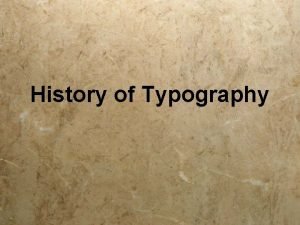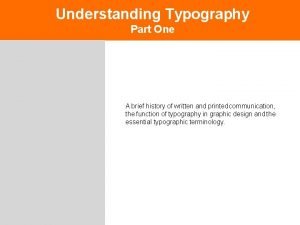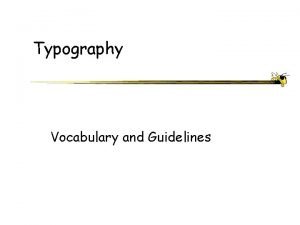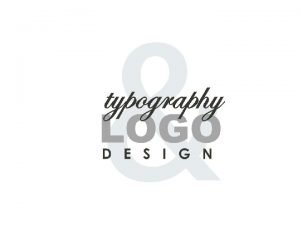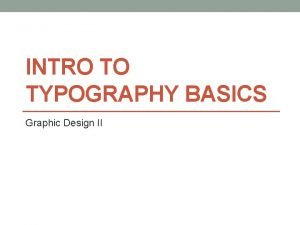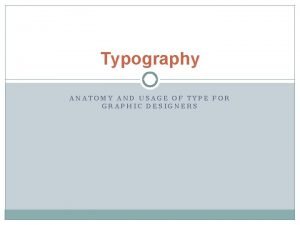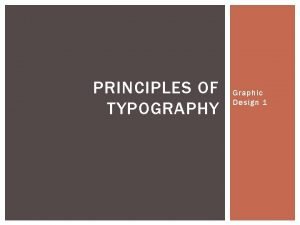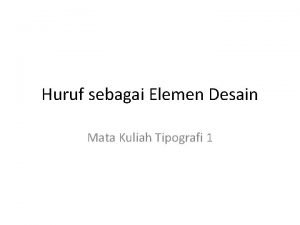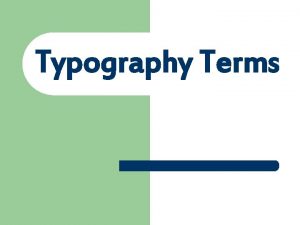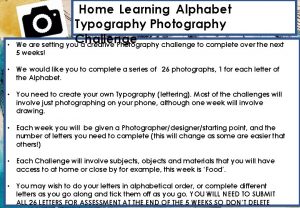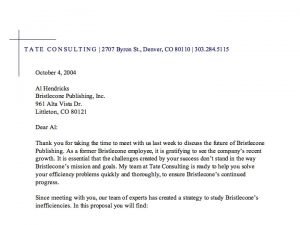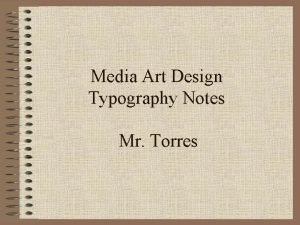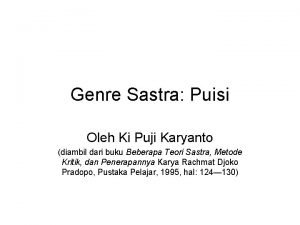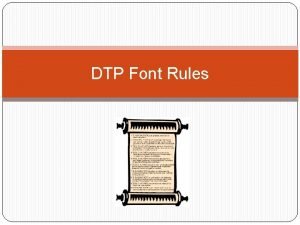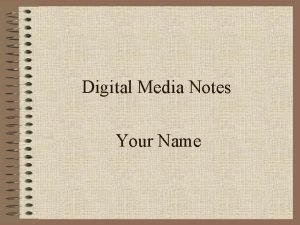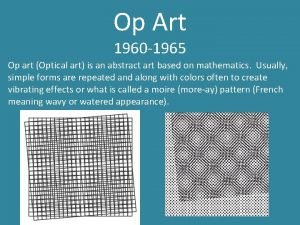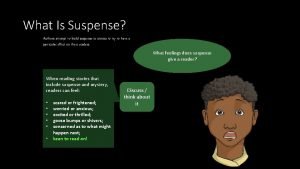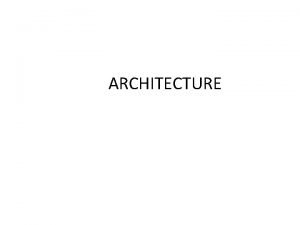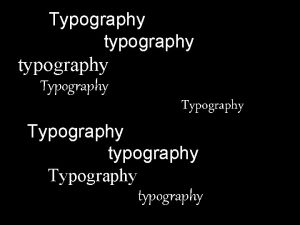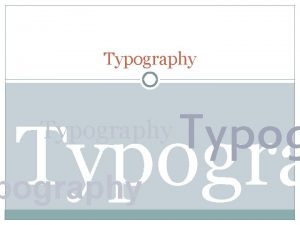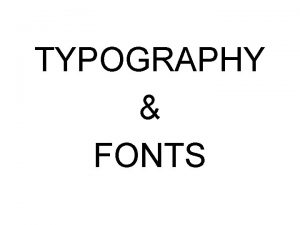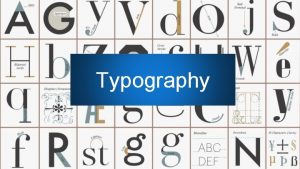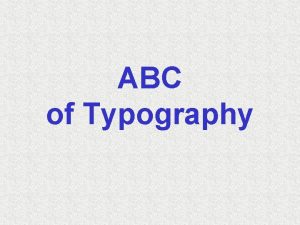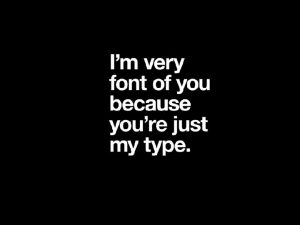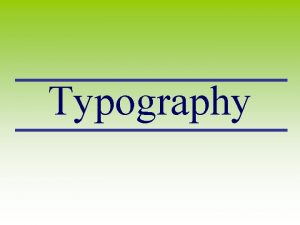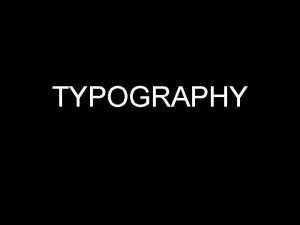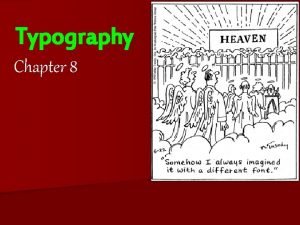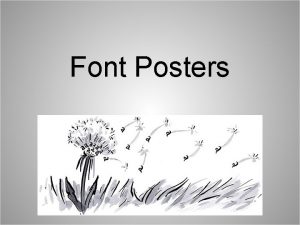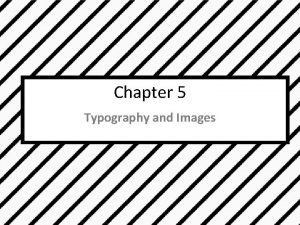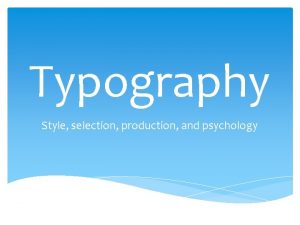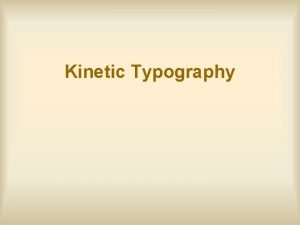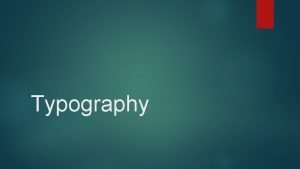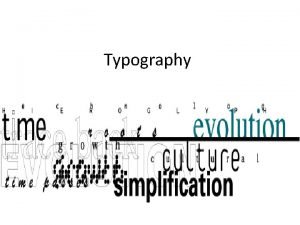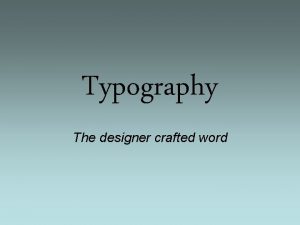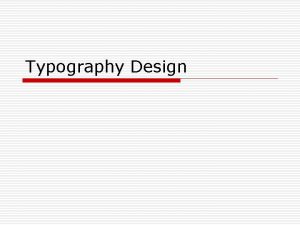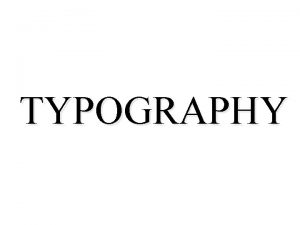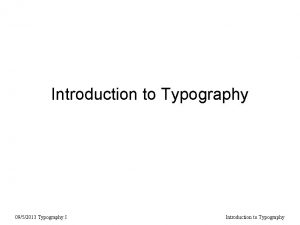Typography is the art and technique of creating

























- Slides: 25

Typography is the art and technique of creating and composing type in order to convey a message. Words are communication. What do they say? The meaning should come before the look of the type is considered. Choose typographic styles and sizes that are appropriate to the meaning and will serve the text's relative importance in the hierarchy. There are many typefaces that can be chosen in design, but that does not mean that all are good.



What is the difference between a font and a typeface? Oftentimes designers get asked what the difference is between a font and a typeface. Even seasoned Graphic Designers can get this wrong. Many people, designers and non-designers just think a font and a typeface are the same thing. That’s actually not the case. Back before computers, and even still today, type was placed on prints using individual metal letters with ink pressed down on paper. That’s where the terms typeface and font started. A typeface is all of the individual metal blocks a printer had on hand. A font is a subset of the blocks in the typeface. For example, Garamond in 12 point is considered a different font than Garamond in 8 point. All of the metal blocks within Garamond, however, are considered a typeface. Another example is Times New Roman in 24 point is considered a different font than italicized Times New Roman at 28 point. Just like all of the metal blocks within Times New Roman are considered a typeface.


Ascender - The lowercase character stroke which extends above the x-height. Baseline - The imaginary horizontal line to which the body, or main component, of characters are aligned. Bowl - The curved stroke which surrounds a counter. Bracket - A curved line connecting the serif to the stroke. Bracketed serifs with cupped bases bracketed serifs with flat bases unbracketed serifs Counter - The empty space inside the body stroke. Descender - The lowercase character stroke which extends below the baseline. Loop - The bottom part of the lowercase roman ‘g’. Sans serif - From the French, meaning “without serif”. A typeface which has no serifs. Sans serif typefaces are typically uniform in stroke width. Serif - Tapered corners on the ends of the main stroke. Serifs originated with the chiseled guides made by ancient stonecutters as they lettered monuments. Some serif designs may also be traced back to characteristics of hand calligraphy. Note that serif type is typically thick and thin in stroke weight. X-height The height of the body, minus ascenders and descenders, which is equal to the height of the lowercase ‘x’.


Traditional text is measured in points, the standard unit of measure in software programs for creating printed documents. There are 72 points to an inch and 12 points to a pica (picas are typically used to measure text widths, images, etc. )


Leading (line spacing) is space between lines of text. LEADING LEADING LEADING Kerning applies to the space between individual letters. Certain combinations of letters typically leave too much space between the characters, such as capital "A" and "W. " These examples have already been kerned, bringing the letters closer together: LAW L A W Tracking or letter spacing applies to whole lines of text. Add or subtract tracking to give text a looser or tighter feel.

Type Classifications

Serif Fonts Serif fonts are marked by little 'feet' that extend from the stem of the letter. All fonts were Roman (serif) until the 20 th century. Serifs say tradition, elegance, formal. Serifs enable reading of large blocks of printed text, hence most books, magazines, etc. use it for body text. Types of serif fonts:

Old Style With some of the earliest fonts, the serifs flow out in simple, graceful curves.

Transitional Smaller curves connect the serifs.

Modern The stems are thick and the serifs thin, contrasting with each other.

Slab Serif Thick. Think Circus, Westerns Rockwell (Egyptian)

Sans Serif No ‘feet. ’ Clean, simple lines, less traditional looking. Hugely popular in the mid-century Swiss design movement. Studies show that reading on screen is easier with sans-serif typefaces.


Script Design a Wedding Invitation!

Decorative Can you read me clearly? …not usually

making paragraphs

alignment

Orphan: An orphan is a single word at the bottom of a paragraph that gets left behind Widow: A widow is a word or line of text that is forced to go on alone and start its own column or page.

Adjust your rag

Watch out for rivers.
 History of typography
History of typography Understanding typography
Understanding typography Typography vocabulary
Typography vocabulary Typography logo
Typography logo Intro to typography
Intro to typography Anatomy of a font
Anatomy of a font Principles of typography
Principles of typography Elements of letter
Elements of letter A complete set of letterforms is known as a font, or a
A complete set of letterforms is known as a font, or a Typography minggu
Typography minggu Photographers who use typography
Photographers who use typography Typography design
Typography design Typography concepts
Typography concepts Aplikasi typography
Aplikasi typography Typography rules
Typography rules Typography notes
Typography notes Istilah kritos
Istilah kritos Dtp rules
Dtp rules Typography notes
Typography notes Defaulf
Defaulf Creating energy was at the center of optical art.
Creating energy was at the center of optical art. How do authors create suspense
How do authors create suspense Architecture is the art and the technique of building
Architecture is the art and the technique of building Creating and interpreting graphs and tables
Creating and interpreting graphs and tables Hình ảnh bộ gõ cơ thể búng tay
Hình ảnh bộ gõ cơ thể búng tay Slidetodoc
Slidetodoc
